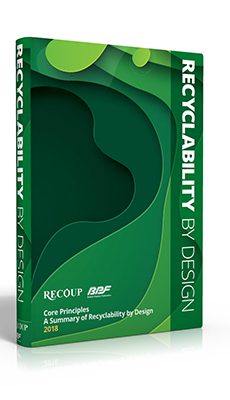
In an initiative to address plastic waste, RECOUP and the British Plastics Federation (BPF) have launched new guidance to help packaging designers create easy-to-recycle plastic packaging.
Launched by RECOUP’s CEO Stuart Foster at the BPF’s annual Packaging Seminar in London on 28 November, the guide outlines which combination of closures, seals, labels and materials ensure recycling plants can easily separate and recycle the plastics.
Big brands are being encouraged to use the guidance to ensure their packaging products can be easily processed at the end of their lives to avoid going to landfill, and instead be recycled into new products in an important move towards developing a circular economy.
In this environmental initiative, the plastics industry is providing the resource to top product design schools across the country, distributing it within the plastics manufacturing industry, and offering it free of charge on the BPF and RECOUP websites.
Philip Law, director general of the British Plastics Federation, said:
“We are very happy to collaborate with RECOUP on this project, and hope this step helps bring together stakeholders involved in the production of plastic packaging, so we can pool our knowledge and expertise to help leave the environment in a better state for future generations.”
RECOUP CEO, Stuart Foster stated at the BPF Packaging Seminar in London, late November:
“As interest in designing packaging for recyclability has grown in the past 12 months, it has been recognised that we need summary guidance and this is what we have done. We hope this will help people on their journey to developing more recyclable packaging.”
Based on industry expert advice, the document provides simple tips including avoiding the use of strong colours, ensuring that closures are easily separable and that, when possible, packaging products should be composed of a single material. Detailed information is also offered on what to do when using multiple types of plastics, including which plastic types can be combined and which combinations should be avoided.
Access the full guide at bpf.co.uk/eco-design.






